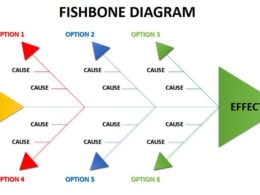Exactly a year ago, I began my inventing odyssey. Over breakfast, I announced to my family that I was going to extract the idea that I had in my head and take it from inception to market. I sounded very confident, but in reality I knew very little about how I was going to do just that.
As I divulged before, I am pretty determined, dogged, and tough. Once I had this spark of an idea in my head, I was going to figure out how to make it happen no matter what. The whole inventing thing became more about learning the process than the actual product at many times over the last year. I accepted the challenge!
A few months ago, I became really stuck in the phase of moving my prototype forward, and I was so LUCKY to connect with Christopher Hawker of Trident Design. Chris and his team saved me from a big headache, got me get unstuck, and are helping me take my product the last ten percent of the way.
Chris Hawker is Founder and President of Trident Design. Chris is an Idea Guy. Trident comes up with innovative and strikingly designed consumer products in a variety of industries, from pet care to cooking to gardening. Trident had brought many products to market through a variety of business models, including licensing ideas, private label manufacturing, and marketing and distributing products through their own organization. Their most successful product is the PowerSquid, which was licensed to Philips, an innovative, award-winning, and commercially successful power strip. It is sold in many major retailers, including Wal-Mart, Target, Radio Shack and Bed, Bath, and Beyond.
I thought that it would be an awesome idea to interview Chris on the inventing process for all of you budding and aspiring inventors at StartUpNation!
So without further hesitation…My questions on Where to Begin in Inventing answered by Chris Hawker:
RB: An ‘Average Joe’ has what they believe is a great product idea, ultimately what should be their very first step?
CH: ‘The first step is to decide they want to look into their invention and make it a business opportunity.’ The emphasis needs to be on treating your idea like a business and making money. When you fall in love with an idea and start investing money, it is more about ego. Make it less about the product and more about running a business.
After the decision to operate like a business, the next step is RESEARCH. Something important to remember is ‘Don’t look to NOT find it, but look to find it’ when researching your idea. Do not limit your search because you do not want to find bad news because even if you find similar items it does not mean there is no opportunity. You must do research before you start spending money. ‘Search for it with the tenacity as if it exists.’
RB: For me, I did some prototyping at home and then with a local artist before I got stuck. At what point is it crucial to invest in a professional prototype?
CH: This depends on ‘who you are’ and ‘what the product is.’ If you are capable, you may get close on your own to perfection. However, just because you personally cannot take the product far does not mean that you will not be successful. ‘Inventing is a team sport’ (I personally love this notion – RB).
‘Get another professional involved at the moment you see diminishing returns on your progress for the time you are investing.’
RB: When it is clear that it is time to bring help onboard, what should someone new to the industry look for in a designer?
CH: ‘Look for someone who can take it the last 10% of the way.’ Ask for samples of products that they brought to market. This will be an important relationship, so make sure that you like them! Design firms can be expensive, but there are a small group of firms with ‘inventor friendly rates.’ Both the United Inventors Association and the Better Business Bureau are good places to check for design firms.
RB: The million dollar question – Are there ways to tolerate risk in inventing? Possibly some methodical steps to follow in order to avoid risk?
CH: ‘If there was a way to know, I would be rich!’ ‘Focus groups are notoriously unreliable, friends can be overly positive and business owners overly negative, so test with a few people you trust and get feedback, but a lot of it is an intuition thing.’ Licensing often is the better option for most inventors because if everyone says ‘no,’ then there is not much you can do.
To manufacture on their own is a major lifestyle change and commitment for inventors. If that is the choice, then make sure to ‘execute with intelligence and good business decisions,’ do the smallest possible run first because often there are little ‘bugs,’ and make sure your sales will be enough to justify your investment.
RB: WOW! As a new inventor, this is some of the information that I craved in the beginning, so I hope that this helps many up and coming inventors.
I could have spent hours asking Chris questions, but we both had to get back to work……
To learn more about Chris and Trident, you can check out their site here.
For more on my roller coaster ride, you can read up here. Rachel







